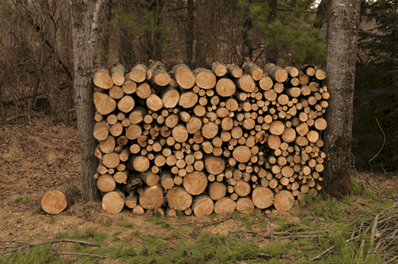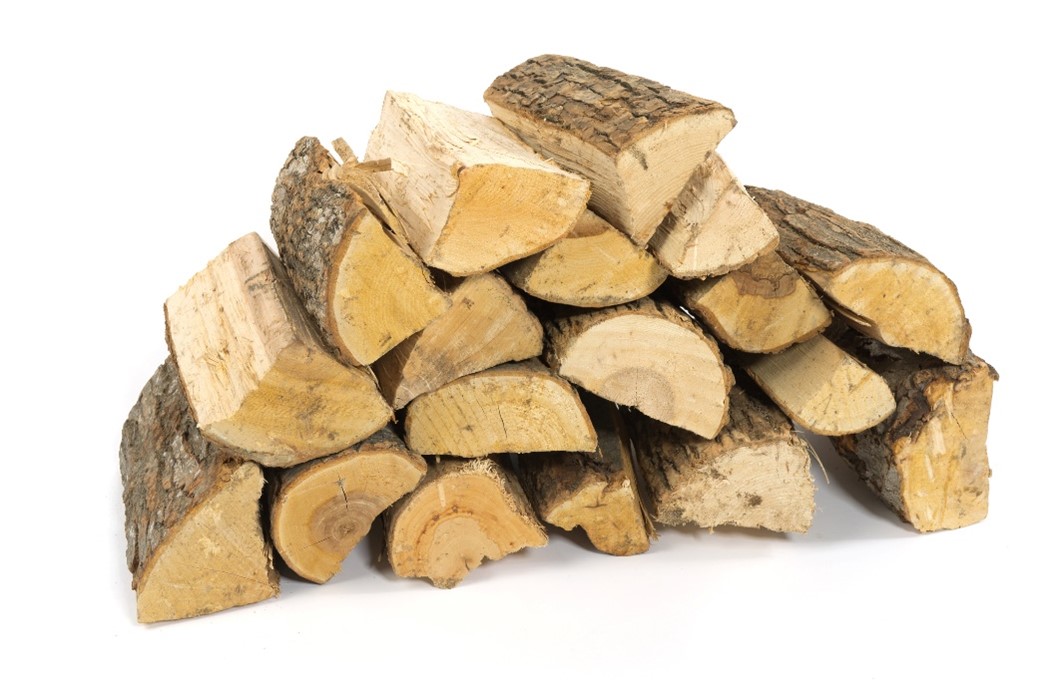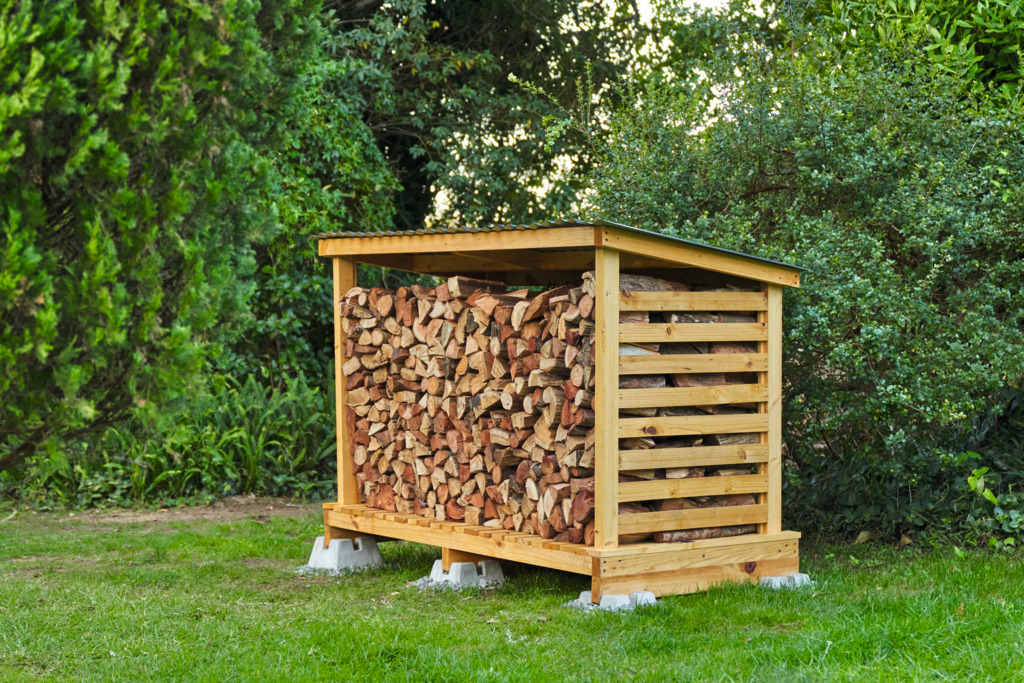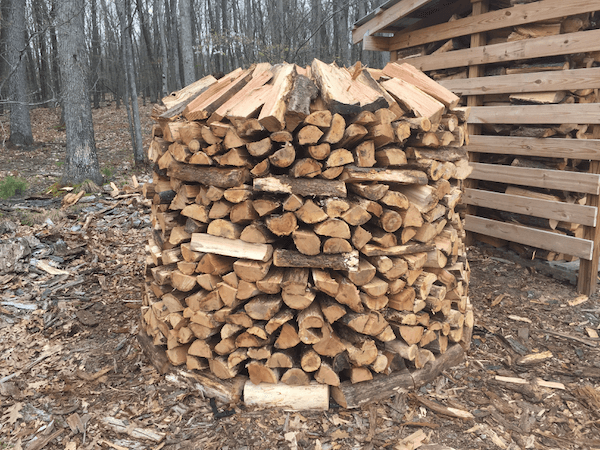In the firewood realm, understanding a rick’s measurement and value is crucial.
This comprehensive guide delves into the specifics of a rick of firewood, a common yet often misunderstood term especially prevalent in North America.
The article provides an in-depth exploration of the dimensions, variations in size due to regional differences, and the weight of different types of firewood.
For those pondering over “how much is a rick of firewood,” this guide offers a thorough understanding, covering aspects from the basic definition to intricate details like cost, storage, and the number of pieces in a rick.
Understanding the Rick of Wood: A Comprehensive Guide

By measurement, a rick of wood is a mass of wood eight feet in length and four feet in height.
It is available in numerous widths depending on the retailer you choose to purchase it from.
In local markets, the width varies depending on region, climate, and even supplier.
The rick of wood might as well be referred to as a face cord sometimes.
In most cases, you will find a face cord or rick of wood in 12 inches, 16 inches, or 24 inches. This infers that each of the logs will be of the sizes in that pile.
The most common size generally is 16 inches in length.
What and How Much Is A Rick of Firewood?
The Englishmen have a saying referring to “rick” as a pile or a stack. It means articles related to the farm, like hay, corn, or wood, to name a few.
However, it is prevalent in North America and has stood the test of time in places like Midwest USA.
Before going to the dimensions of the rick of wood, it is convenient to know how big a cord of wood can be.
Usually, cords of wood tend to be four feet in height, four feet in width, and about eight feet in length.
A part of the entire cord is essentially a rick. In most cases, a cord is about 48 inches in width.
To understand the similarity between ricks and cords, assume you have a 12-inch-wide rick.
That is equivalent to a quarter of a cord. If it is a 16-inch-wide rick, it is equivalent to about a third of a cord of wood.
A rick of 24 inches in width equals about half a cord.
For several other reasons, it is essential to know exactly the width of firewood you need.
Even though there are always measurements to help you, the sizes and volumes can differ due to region and climate.
How Much Does Rick of Wood Weigh?
Several factors decide the weight of the wood. It depends on the size and the type of firewood you need to purchase.
Usually, Red and White Oaks comprise the heavier types of wood.
There are ricks of wood that can even weigh around 5500 pounds (one and a half tonne) in a single chord only.
Spruces are the light types of firewood available in the market. Yet, a full cord will weigh around 2500 pounds (that is nearly a tonne and one-fourth)
Depending on the width of the wood, firewood can weigh around anywhere in the range of 625 pounds to 3000 pounds. This may vary due to region, climate, and even rainfall.
How Many Pieces of Wood Are There in A Rick?

In most cases, there are around 550 to 650 pieces of seasoned wood. However, they need to be split into a single cord of wood.
How well the wood has been cut and if the wood has been packed tightly determine all this predominantly.
In a Rick, you get roughly 275 to 325 pieces of firewood.
Be sure to talk to your distributor about the type of firewood you want for yourself since the varying lengths can vary from region to region.
Often, there are cases where the buyer ends up getting less than what they wanted simply because of the varying lengths.
Figure 2Ergo, Weighs A Lot More Than We Think
How Much Does A Rick of Wood Cost?
Like everything else, the price of a rick of wood depends upon the retailer and the location.
A Rick or face cord of Oak can cost you around $150 to $250.
Even the type of wood can determine its price. For example, black locusts cost more than red oak, maple, etc.
If the wood is seasoned, how has it been seasoned – air or kiln-dried, the market, all these factors play a role in determining the price of the wood.
Therefore, considering all the points involved, the chance of getting a wider range than a specific price for the same amount of wood is very high.
Nevertheless, to be safe, you can have a budget towards the higher end of the spectrum.
This will ensure you get the wood you need without being shocked by its cost.
Some people like picking up their wood to avoid the high delivery charges.
This may cost you less but can be very hectic. Not everyone has a pickup truck and can load their firewood on it.
If you want to get it delivered, make sure you count a delivery charge of around $1.00 to $2.00 for every mile they must travel.
How to Store the Firewood?

Now that you are done with your purchase, storing the firewood properly and protectively is very important.
A Rick, cord, or any other measurement firewood is not cheap, and the last thing you want is for them to get wasted.
Suppose you have them delivered but not stacked. In that case, what is next? If you want to split and dry it, all you must do next is store them where you are comfortable with them.
Please keep in mind to store the firewood conveniently, especially in winter, and try to cover it to protect it from the cold.
If the firewood delivered to you appears wet, green, or not split, you have a lot of work to do on your own.
First, you should split them into more convenient pieces.
This is mainly done for two reasons: it makes them easier to carry, and they burn better in the flame for a prolonged time.
If the firewood delivered to you is green or wet, store it in the open air to dry it.
Where and how you pile or stack the firewood is important in deciding how quickly and efficiently the wood dries.
It is always better to stack them someplace higher than the ground level.
When keeping your firewood above ground level, it boils down to pallets, logs, and bricks.
The most widely used, popular, and realistic way to go with this is stacking them row by row.
You can simply cross-tie them or have stakes at the end of the pile to keep it secure.
However, there is a catch to efficiently cross-tie them. While splitting the firewood, try making as many square pieces as possible.
The square-shaped pieces make the end of the stack stronger than the round or odd-shaped ones.
This will save you a lot of effort and time. Nothing is worse than stacking up all the firewood and watching it fall over simply due to loosely tied ends.
It is also advisable not to stack them in between trees. It may look rigid, but the trees have movement, and it will cause the stacks of firewood to topple over sooner or later.
You can try either the circle piling or the heap piling methods, but the single-row stacking method is the best and most reliable way to stop them.
If you think that area is a concern, you can stack more than a single row but leave a good space between each row.
This enables air to circulate throughout the surface area of the wood and maintain proper circulation so that the wood can stay dry throughout the time.
What Exactly Do We Have to Burn?

Please be sure that you burn dry wood. Burning green wood in your fireplace might cause your entire house to fill up with smoke that is not comfortable.
Please be sure to stack your wood methodically. You should be able to get the driest wood before the greener ones.
Maybe rotate the stacks and keep a check on the condition of the wood from time to time.
First, burn the oldest pieces in the stock first and foremost to prevent them from rotting while at your store.
Having purchased them for good money, you must want to get through a lot of rick and cords without wasting any. After all, they are a piece of nature.
As far as stacking is concerned, you can find holders and racks available in the market at convenient rates.
The best part of buying them is their versatility. They can be used both indoors and outdoors, so it would not be a problem if you want to store the firewood in your garage or shed.
If you plan to keep the firewood in your home, you should keep a small stock that lasts a few days.
Having them in a large amount for a long time might cause a lot of pests inside your home.
Besides the insects, the wood shavings and the dirt can cause allergies, especially to kids.
Not only that, but the pollen that gets stuck on the wood can also cause infections.
You must know by now that making sure the wood stays dry is of utmost importance.
If you have wet wood indoors, the moisture trapped inside may increase the humidity level indoors.
Honestly, that humidity can cause your own home to be uncomfortable to live in.
